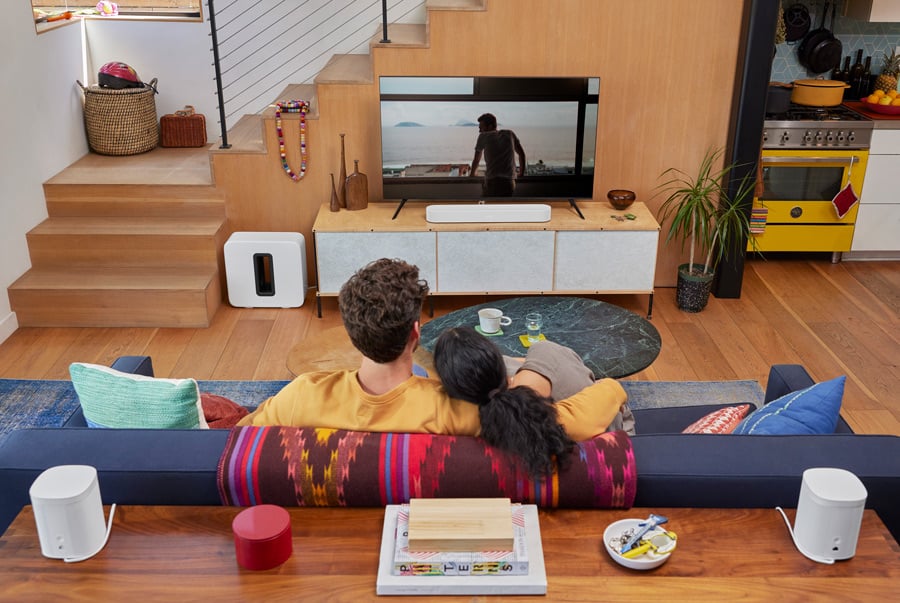Download the report
xRetailers on Retail


ECOMMERCE
Empathy-driven design: How Sonos used customer journey data to improve conversion rate
We chatted with Sean Knotts, Senior eCommerce Manager at Sonos, about the recent site redesign of Sonos.com. Sean shares how Sonos approached the project, what data they used to inform the design, the project’s objectives, and some quantitative and qualitative results.
About Sonos
Sonos is an American developer, manufacturer and retailer of audio products and the world’s leading sound experience company. Sonos innovation makes it easy to play what you love—music, podcasts, movies, shows, audiobooks, radio and more—and share it out loud with the ones you love. They are known for delivering an unparalleled sound experience, thoughtful design aesthetic, simplicity of use, and an open platform.
What led Sonos to redesign their site?
After the monumental shift and demand towards more digital touchpoints in 2020, Sonos set out to understand how their site was responding to the direct-to-consumer (DTC) channel preference that occurred during the pandemic.
Having previously redesigned their site back in May 2019 with positive results, Sonos wanted to take things one step further. They wanted to see if they could improve their site experience and double-digit conversation rate increase even more.
And since DTC was having such a huge influence on their business, they decided to dig into the data and do some comprehensive user research. The initial insight? That despite the overall positive conversion rate, Sonos.com wasn’t positioning the site journey for prospective customers as well as it could be.
Historically, Sonos.com has been well-positioned for the owner audience (or those who already understand the value proposition on the experience benefits of Sonos). But prospective customers don’t have the same context and background knowledge as returning customers. So there was a big opportunity for Sonos to enrich their site with educational and inspirational content for new users.
Key metrics to improve
The cross-functional team that was managing the redesign focused on a few key metrics like declining cart completion rate, declining levels of self-reported purpose completion (measured through onsite exit survey), countless points of feedback from user testing efforts, and from a third-party UX audit.
“Users, particularly prospective customers, wanted a better way to browse and compare products. They felt that our product display pages were either scant on education or contained too much marketing fluff. Ultimately, they weren't serving their needs. We also learned that our product display pages were our single greatest exit point.”
“When we tied this knowledge back to the fact we were receiving declining cart completion rates, we knew we needed to invest in our upper-funnel experiences. We needed to ensure we were setting the right context around helping consumers navigate their consideration cycle at Sonos.com.”
 Source: Sonos
Source: Sonos
What does ‘empathy-driven design’ mean?
“Empathy-driven design means employing a data-rich approach to understanding how your users interact with your site and what role the site plays in their path to purchase. Then, ensuring you're leveraging those insights to understand what your users need.” Sean Knotts, Senior eCommerce Manager at Sonos
“From an experiential standpoint in the eCommerce space, I think there are so many tried and true conventions for how we approach experience design. And we see this play out across our sites and in the market with many eCommerce sites that look nearly identical, with their brand marketing skin applied to the top.”
“The data-driven approach, which I really connect to empathy-driven design, is peeling that back a little bit and better understanding the user’s needs. I'm not advocating that anyone bunk tried and true conventions, but I do advocate understanding your category, knowing exactly how it plays into the needs of your prospective customers, and the role your brand site plays.”
 Source: Sonos
Source: Sonos
How did Sonos use empathy-driven design to better its site experience?
“I'll give you an example,” says Sean. “So our previous homepage followed a typical pattern that we often see in eCommerce sites. We had our primary merchandising tout, followed by some category entries, followed by more merchandising zones that were updated seasonally.
However, through user testing, Sean discovered that Sonos’ site layout, including the copy and imagery, simply wasn’t cutting it for new users. “Our approach assumed that our prospective customers knew more about Sonos than they actually did,” he explains.
With this insight at hand, the team took action. “We ended up redesigning the homepage. We started by developing a content framework where we dialed in each aspect of storytelling we knew we needed to hit for prospective customers to understand what Sonos is and why they’d want it,” he explains. “Then we picked each asset for the new homepage and ensured they delivered on each part of the story arc.”

Discover how to improve your homepage
What does this look like in practice? Well, Sonos’ homepage still has the primary tout which leverages an auto-looping video to establish context around the products and the role it plays in the customer’s life. “We also have a simple value proposition statement that helps ground the user in what Sonos is,” says Sean. “We follow up with quotes from the press and some social validation to underscore Sonos’ value proposition.”
Now, Sonos’ homepage is centred upon three storytelling chapters. “We built one chapter around sound innovation, the second chapter around system benefits of Sonos, and then the third chapter around user experience.” Sonos also has merchandising zones that highlight key products and categories, and a rail which reinforces our DTC value proposition, but we didn't start with selling.
“We didn’t start with selling; getting our users into product operators or category apertures. We started with understanding exactly what users needed to navigate their purchase.” Sean Knotts, Senior eCommerce Manager at Sonos
 Source: Sonos
Source: Sonos
How did they measure results?
Sonos gathered insights and data from multiple sources such as user testing, Google Analytics, and Contentsquare to understand the full impact of their site redesign. They noticed positive impacts on key metrics such as increased conversion rate and increased average order value, but also supplementary information such as increased user confidence and an improvement in success rate for task completion.
“We measure both quantitative and qualitative feedback. For example, we measured how intuitive the design was by analyzing the hit rates on certain elements where we prompted a user to take a particular action. This allowed us to see and report on how confident the user was,” Sean explains.
Using data from both Google Analytics and Contentsquare allowed the team as Sonos to interrogate and optimize their site redesign as it happened. “These analytics tools helped us to understand whether we were headed in the right direction. As we progressed, they validated everything for us from the design phase and into development.”
NEXT

Ecommerce
How G-Star are using Google’s HEART framework to navigate, analyze, and improve their customer experience

Ecommerce
Prioritizing digital transformation as the world shifts to mobile: TomTom on their latest app experience

Ecommerce
User research, digital intelligence, and a testing-obsessed mindset: The recipe for success according to Moss Bros



